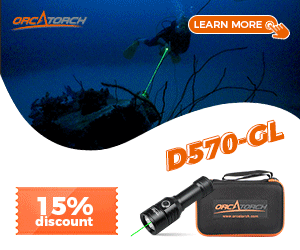Greg,
Thanks for the clarification on the Voit Navy. I stand corrected. I will go back to that old post and make a correction. Thank you!
The desire at the time was not really for "easy breathing." One of the failings of the USD Overpressure Breathing regulator, according to Fred Roberts, was that it was too easy to breath. This regulator has "...the venturi air (was) piped directly to the mouthpiece via a small tube on the inside of the regulator intake hose. The chief objection to this arrangement was that the air tended to gush and occasionally the velocity at which it passed the teeth was objectionable..." (Fred Roberts, Basic Scuba, page 1891). Some divers did not want the "increased" air consumption due to ease of breathing too.
Concerning the Voit VRC-2 50 Fathom, I would not dive it for one other reason. While the painted box looks great, it did not stand up over time. I have seen some with peeling paint after some years' of use. If that paint is scratched, I think it may be prone to deterioration and peeling. The Voit Blue 40 Fathom, with the plastic box, is almost indestructible though.
I liked your idea about the orientation of the valve, using the circlip to show where it is. I'll put that one to use.
I have another idea, which has to do with the Mistral. The Royal Mistral not only had a balanced single stage design, but also was simply missing the Mistral orifice. Instead, as I remember some photos from Bryan it simply had the screwed opening. To create some turbulence, it used a piece of metal brazed onto the box in the intake, to lower the opening. What I'm wondering is whether the same effect could be seen by removing the orifice on a Mistral, and then orienting the opening just off the side of the intake on the box like the Stream Air had; could this work, and provide more air flow at the same time? The advertisement (from memory--very risky memory) said that the Royal Mistral could flow 40 cubic feet of air a minute. I think this had something to do with it.
SeaRat
The original DX design didn't really contain the same venturi design as that used in the later versions. The small green hose was connected directly to the valve's body. That fast moving gas passing through the mouthpiece insert was directed straight into the diver's mouth. As that rapidly moving gas escaped from the small holes, it created an area of low pressure within the hose/mouthpiece section. That low pressure area then "pulled" a significant amount of air from within the cans and hoses into the mouthpiece as well. If a diver took a quick, deep breath the diaphragm could be drawn down into the cans due to the considerable vacuum.
The DW used a nozzle to direct the fast moving gas flow into the inhalation horn. Due to the same issues, the nozzle was aimed slightly to the side of the horn so that a controlled amount of turbulence occurred, thus lessening the venturi effect. You are correct in that you could have simply used a hole, just as USD did with the Royal Mistral. However, just as the RM, and the Voit 50 Fathom, you would need an additional port to provide additional flow into the cans. Just think of it as a means of controlling the venturi so that it didn't become excessive as was the case with the DX. It is this reason why Voit's engineers likely used the small venturi hole in the 50 Fathom. Their logic was that because the hole's diameter was smaller than the one of the opposite side, the velocity would be greater. That greater velocity would then create a greater amount of venturi assist. In theory, at least...I believe that the hole was just too small for adequate effect. As we both concur, the reg simply breathes easier with the body's position rotated 180 degrees.
The Mistral's venturi tube could be pointed directly down the horn's center because it used smaller diameter side vents. Those ports ventilated the cans so that the assist could never get out of control. Just as with the RM, carefully placed secondary ports would have done the same thing. USD probably choose the Mistral venturi tube for ease of manufacture. Plus, it allowed them to retrofit all the DX and DW valve assemblies with the new design without requiring any drilling operations.
I agree on not diving the painted VCR-2 regs. I have two of them, and rarely are they used. It is just too easy to scratch the paint. I normally use my 1961 chrome versions, or one of my two faux Blue 50 Fathoms.
The painted ones sure are pretty, though...
BTW, I had a chance to dive an experimental balanced single stage regulator about a month ago. It was simply incredible. The reg had a cracking effort that was so light that the duckbill had to be carefully fitted to avoid a free flow while vertical in the water column. If it makes it to production, a lot of people will desire one. It truly is balanced, as there was no perceptible difference in the breathing effort with changing cylinder pressure.
Funny, the gear is now vintage, but is actually better than when new thanks for advances in the reproduction parts. It wasn't long again that I was trying to patch up rotten diaphragms.
Greg



